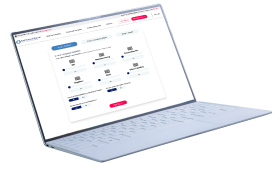
Understand your company's position and learn more about the options available
Require Immediate Support? Free Director Helpline: 0800 644 6080
Free Director Helpline: 0800 644 6080
Updated:
You can close a company with outstanding debts by using a formal insolvency process known as a Creditors’ Voluntary Liquidation (CVL). Closing a company with debts does not prevent you from starting a new company either immediately or at a future date as long as you have not been disqualified from acting as a director.
As the director of a company which is failing due to financial difficulties, you may be considering liquidation in order to start up a new business, free from the worry of unmanageable debt.
For more information on your options for closing a business, please visit our main Closing a Limited Company page.
Firstly, before committing to liquidating your current company, you should take the time to understand whether its fortunes could be turned around through a process of restructuring or refinancing. Just because a company is struggling to repay its debts, does not mean that the company is beyond rescue. Many companies are able to recover from this position and go on to have successful futures. However, this is only possible if you take action during the early stages of financial distress and put a workable plan in place to help turnaround the company's situation.
If you are experiencing debt problems with your company, you are far from alone. During their lifetime, many businesses will experience some form of financial distress. For some this may take the form of a short-term cash flow issue which is quickly resolved; for others, the situation may require professional help from a corporate insolvency professional such as a licensed insolvency practitioner.
The good news is that there are a range of rescue and recovery options out there which may be able to help your business through its current debt struggles whether you are looking at closing the business or restructuring its liabilities.
Free 60 Second Test
For Ltd Company Directors
What are you looking to do?
Choose below:
Unfortunately, it is sometimes the case that company’s debt problems will take it beyond the point of rescue. In these instances, it may be the best solution for all concerned to look at ways of closing the company and bringing its affairs to an orderly end by way of a formal liquidation process.
An insolvency practitioner will be appointed to handle the process on behalf of the company; they will liaise with creditors, ensure company debts are repaid as far as possible, before having the company dissolved at Companies House. This is a serious step to take so you should ensure you talk through all of the available options with a licensed insolvency practitioner before committing to a course of action.
There are two routes into liquidation for an insolvent company: Creditors' Voluntary Liquidation (CVL) and Compulsory Liquidation (WUC).
“I completed the simple on line form, received the free guide by email immediately and then a call from Tom who was so very helpful. Highly recommend this service”
Pauline Whitehead
A CVL is a director-initiated process which allows the director of an insolvent business to voluntarily cease trading and appoint a liquidator which must be a licensed insolvency practitioner to liquidate assets. As part of the liquidation process, the insolvency practitioner will liaise with any creditor claims, deal with employees, sell assets, and issue the required reports to government agencies. The funds realised from this will be used to pay for the liquidation process and any remaining funds will be used to pay creditors.
Looking to close your company?
Whether your company is solvent or insolvent, there are a number of ways to bring your business to a close. Speak to a member of the Real Business Rescue team today to understand your options.
The team are available now - 0800 644 6080
Get a Quote Find Your Nearest Office
While the process of Compulsory Liquidation is much the same as a CVL, it differs in that the company is essentially forced to enter liquidation via a winding up court order rather than the directors triggering this process on their own accord. A company can be forced into compulsory liquidation by a disgruntled creditor when all other methods of debt recovery have failed.
Liquidation can be used to write of company debts. After a limited company is liquidated, it ceases to exist as a legal entity. This means that any debts which were not able to be repaid through the sale of company assets will be written off as part of the liquidation process.
However, while liquidation can write off company debts, you should be aware of any borrowing which you have secured with a personal guarantee. Debts which have been personally guaranteed will not be written off during liquidation. Instead they will remain active, and the responsibility for repaying them will switch to the individual who provided the guarantee.
Once a company has been liquidated, its directors, unless they have been subject to a disqualification order, are typically free to set up another limited company if they wish.
In the event of liquidating a company with debts and incorporating a new company, there are a number of legal requirements and restrictions which need to be taken into consideration particularly when it comes to using the same company name, or a similar name following the liquidation of an insolvent company.
If the old company was placed into compulsory liquidation, the same name or a similar name cannot be used. Section 216 of the Insolvency Act 1986 states that it is illegal for the director or shadow director of a company, at any time in the period of 12 months before it went into liquidation to be involved in another company which has the same name or a similar name up to five years.
There are three exceptions to reusing a company name in this circumstance.
1) Where the new company acquires the whole, or majority of the whole of the insolvent company, as arranged by an insolvency practitioner acting as the liquidator, administrator or administrative receiver, or a supervisor of a voluntary arrangement.
In order to reuse the name in this circumstance, notice must be given in two forms under rule 4.228:
2) The second exception under rule 4.229 involves the new company requesting permission from the court, also known as ‘leave’, to reuse the name of the insolvent company. The following two conditions should be taken into consideration:
(a) Court leave must be applied for by no later than 7 days from the date the company went into liquidation
(b) Leave will be granted by the court no later than 6 weeks from this date
3) The third exception, rule 4.230, states that the name of the insolvent company can be used if the following has been met:
(a) The company has been known by that name for the last 12 months before the company went into liquidation
(b) The company must not have been placed into dormancy in the last 12 months
Worried about the rise in National Insurance?
The 2024-25 tax year increase in the rate of employer National Insurance contributions is adding yet more pressure onto already squeezed company cash flows. If the increase in National Insurance is the last straw for your company’s finances, talk to the experts at Real Business Rescue.
Our team of licensed insolvency practitioners are available now - 0800 644 6080
If HMRC believe that there is a risk that your new company may fail to pay its tax on time, they may request a security deposit, such as a bond or fixed security payment. If you fail to pay your bills to HMRC, they will settle the balance by keeping the security deposit. Property and high value items cannot be used as a security deposit.
It is an act of misfeasance to sell the assets of the company at a price lower than their market value once the business is known to be insolvent. This is known as a Transaction at Undervalue, and the appointed insolvency practitioner is duty bound to investigate transactions of this nature as per CDDA requirements.
If your company is struggling with unmanageable debts, squeezed cash flow, or an uncertain future, you are far from alone. We speak to company directors just like you every single day, and we are here to give you the help and advice you need.
Call our team today on 0800 644 6080
Due to poor credit history and bad relationships with creditors, they may be hesitant to provide the new company with a credit account without extra security in place, such as tighter terms or an advance payment.
If liquidating your business and starting afresh is the best possible option for your business, the next step is to appoint an insolvency practitioner. Once the commercial debt has been written off, you can focus on building a new business, taking into account previous lessons learnt from operating your old business.
If you would like to speak to a Real Business Rescue expert about the liquidation of your company, call one of our licensed insolvency practitioners. We can arrange a free same-day consultation at a nationwide network of UK offices across the country.
Still unsure whether liquidation is right for your company? Don't worry, the experts at Real Business Rescue are here to help. Our licensed insolvency practitioners will take the time to understand the problems your company is facing before recommending the best course of action going forward based on your own unique circumstances.

Complete the below to get in touch
For Ltd Company Directors
What are you looking to do?
Choose below:
We provide free confidential advice with absolutely no obligation.
Our expert and non-judgemental team are ready to assist directors and stakeholders today.

Understand your company's position and learn more about the options available

Find your nearest office - we have more than 100 across the UK. Remote Video Meetings are also available.

Free, confidential, and trusted advice for company directors across the UK.